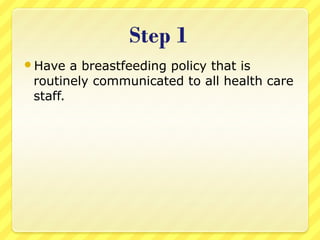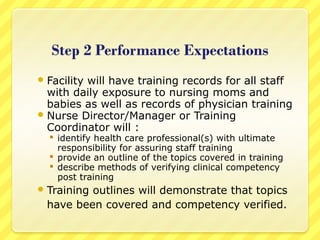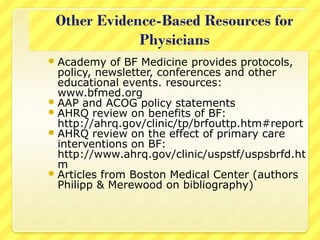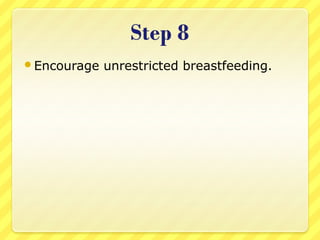The document discusses Baby-Friendly Hospital Initiative (BFHI) assessment and how BFHI can be included in existing programs. It describes the 10 steps to successful breastfeeding that facilities must demonstrate compliance with to be BFHI designated. These include having a written breastfeeding policy, training staff, informing pregnant women of breastfeeding benefits, helping initiate breastfeeding within 1 hour of birth, teaching breastfeeding maintenance, giving only breastmilk to infants, practicing rooming-in, encouraging unrestricted breastfeeding, and fostering breastfeeding support groups. It also outlines the BFHI assessment process and pathways to designation.


















![Give newborn (breastfed) infants no food
or drink other than breastmilk, unless
medically indicated.
[The requirement to purchase formula is a
sub-step of Step 6.]](https://image.slidesharecdn.com/session15-130618082717-phpapp02/85/Breastfeeding-Module-5-Session-15-19-320.jpg)











